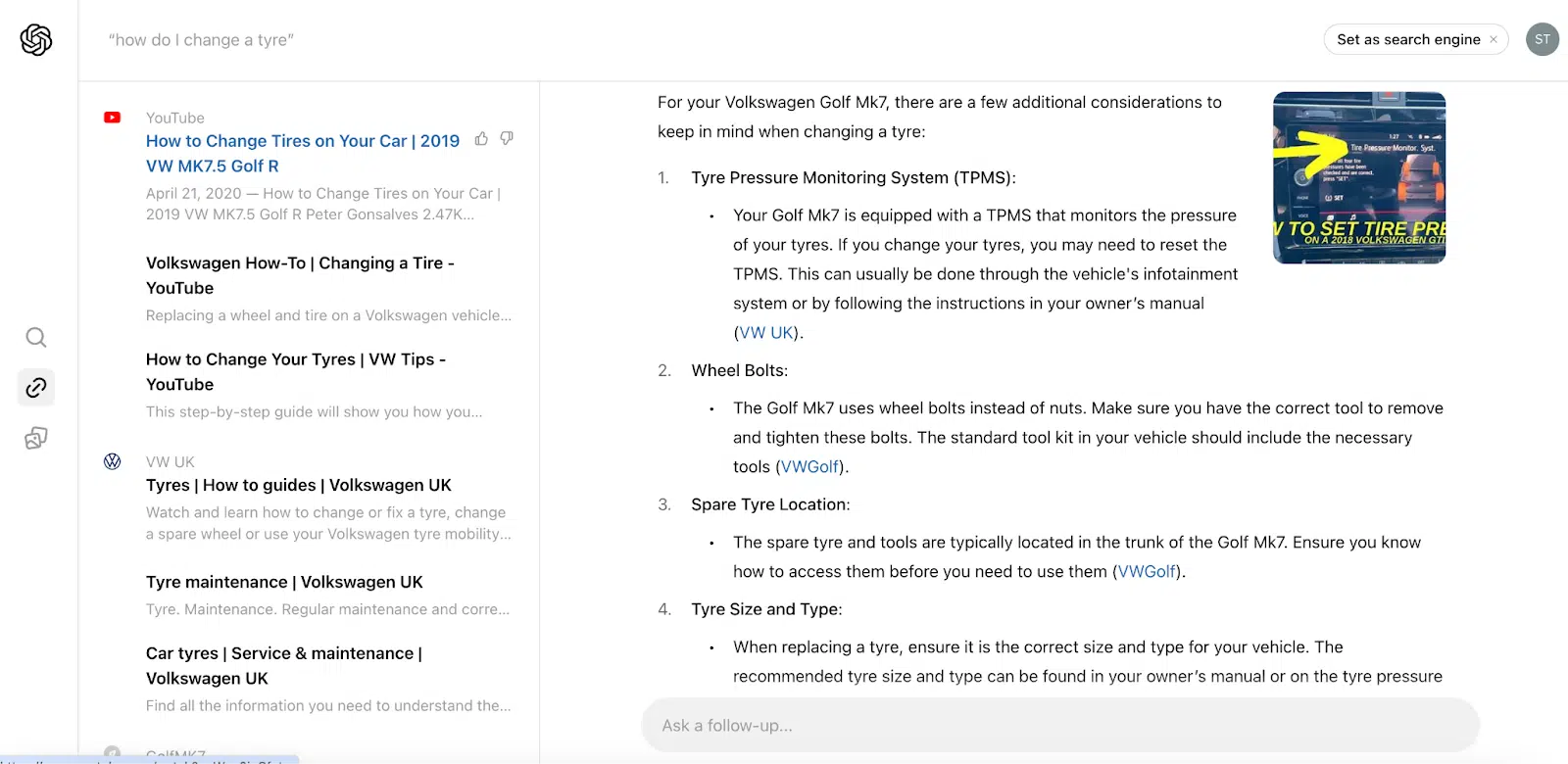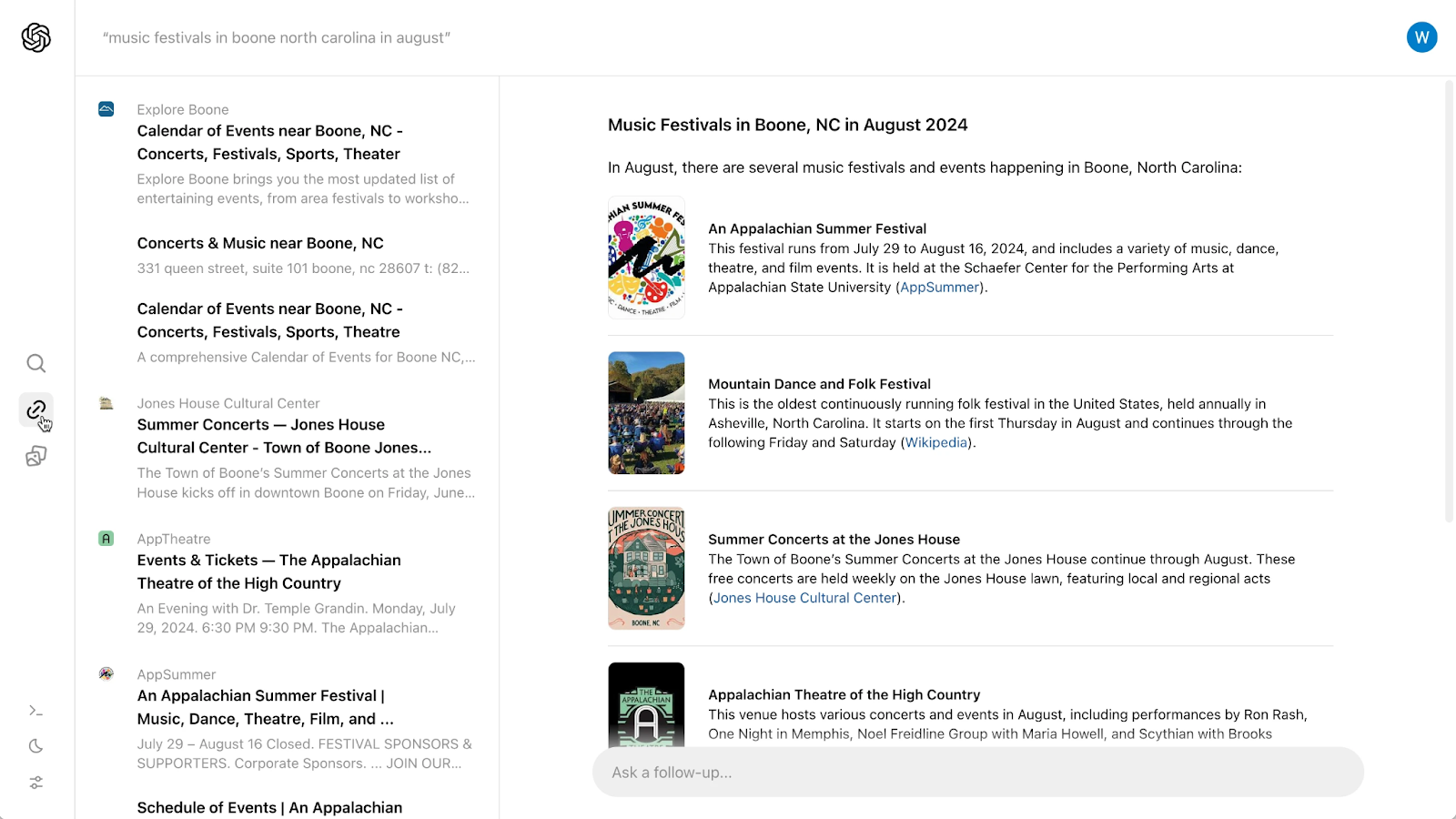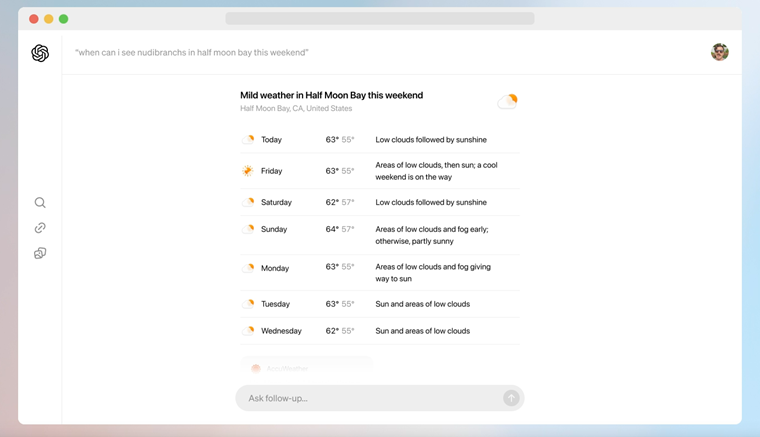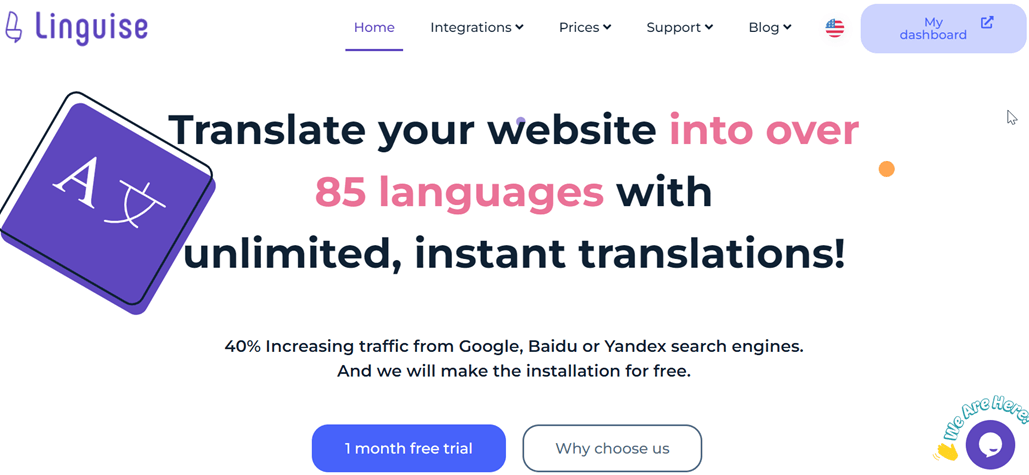SearchGPT has been the talk of the town in the search engine industry. It is an OpenAI breakthrough that not only enlivens search engine competition but also revolutionizes the way we interact with the Internet.
As a fellow internet user who has been comfortable with Google, you must be wondering, “how is SearchGPT different from a traditional search engine?” or “will this change the way we browse?”. In this article, we will explore SearchGPT and how this AI technology can be a game-changer in the world of online search. Let’s get started!
What is SearchGPT?

SearchGPT is the latest innovation from OpenAI, bringing a more sophisticated and humanized internet search feature. Imagine having a super-smart personal assistant who can understand your questions and give you the right answers, unlike Google, which gives you a list of links to click on one by one. Just like ChatGPT, which quickly became popular and widely used by millions of people, SearchGPT is also gaining significant attention and favor among users. You can try it out yourself by subscribing to ChatGPT Plus.
The way this feature works is actually simple. You can ask anything using everyday language, and SearchGPT will search for information from various sources on the internet. After that, the answers will be neatly summarized and presented in an easy-to-understand format. Additionally, SearchGPT provides links to the sources of information so you can verify the accuracy and reliability of the answers.
Many people are increasingly favoring and using this tool to search for information. Why is that? Here are some of the reasons.
Direct answers
In SearchGPT, you can search for information like you would in a casual chat with a friend. There is no need to use special language or complicated keywords to ask, and the answers you get are also more personalized and according to your needs.

Accurate answers and citation panels
SearchGPT can instantly provide complete answers, so you don’t have to go to multiple websites, the information is also summarized in a neat and easy-to-understand manner, and each answer has a source that can be checked.

Conversational search
SearchGPT allows users to engage in a conversational search process, enabling seamless interaction with the search engine. This means users can ask follow-up questions, clarify ambiguities, or refine their initial queries based on the responses provided. Additionally, the conversational nature of SearchGPT encourages deeper exploration of topics, as users can probe further into specific details without starting a new search. This approach saves time and enhances efficiency while making the search process feel more intuitive and user-centric.

SearchGPT vs. traditional search engines

Many ask, will SearchGPT replace the traditional search engines that we currently use, such as Google, Bing, Baidu, etc.?
Although this is still a long way off, considering SearchGPT is still new to the online search industry, it is important to know the difference between the two and why SearchGPT can be a breakthrough solution.
Conversational vs keyword-based search
When using SearchGPT, you can ask questions just like chatting with friends – casual and natural. For example, you can ask, “Give me a recommendation for a romantic movie that’s suitable for watching with my LDR girlfriend, but one that doesn’t make me cry!”, SearchGPT will perfectly understand your context, from the movie genre the desired mood, to your specific situation. In fact, if something is unclear, you can simply ask again to clarify, such as “What’s on Netflix!” or “What’s not too long!”
Whereas in traditional search engines, you have to think of the right keywords like “romantic comedy movies Netflix 2024” or “best feel-good romance movies”. If the first search result is not suitable, you have to start a new search with different keywords. This can be tiring and time-consuming, especially if you don’t know the right keywords to get the information you’re looking for.
Direct answers vs list of links
When using SearchGPT, you don’t have to open dozens of browser tabs to get complete information. SearchGPT instantly summarizes the information you need in one comprehensive answer, complete with sources. On the other hand, traditional search engines only provide a list of links that you have to click on and read to find the right information.
AI understanding vs keyword matching
SearchGPT actually understands what you’re asking, even when your question is imperfect or ambiguous. For example, if you type “how to make your kids like vegetables”, – SearchGPT understands that “kids” means children and will provide tips accordingly. Traditional search engines, on the other hand, only match keywords, which can sometimes yield results that are less relevant or even off the mark.
This ability to understand context also allows SearchGPT to capture the nuances and implicit intentions in your question. If you ask about “cozy coffee shops in Italy”, SearchGPT doesn’t just give you a list of coffee shops but also considers the comfort factor, atmosphere, suitable for work or hanging out, and maybe even recommendations for instagramable photo spots!
Continuous vs split search
When using SearchGPT, you can continue a question from a previous topic without having to explain the context again. It’s like chatting with a friend who remembers what you’ve discussed before. In traditional search engines, each search is a new, separate search, so you have to retype the context every time you look for related information.
This continuous feature is especially helpful when you’re doing in-depth research on a topic. For example, if you start with a question about “how to start investing in stocks”, you can then go on to ask, “what are the risks?” or “what is the minimum capital?” without having to re-explain that you are discussing stock investment.
Real-time information vs web index
SearchGPT always tries to provide the latest information by accessing real-time data from the internet. So, if you ask about an event that just happened, the results will be up-to-date.
SearchGPT provides real-time, context-aware information, ensuring relevance to the current time and situation. For instance, if you search for “concerts in New York in 2024” it highlights ongoing or upcoming events rather than past ones. This feature is especially useful for dynamic topics like ticket prices, product availability, or breaking news, where accuracy and up-to-date.
6 Implications SearchGPT for marketers

The search will be more dialogical
With the arrival of SearchGPT, the way we search for information will change drastically. It’ll feel more like chatting with a friend than typing rigid keywords. As a marketer, you’ll need to start creating content that feels natural and conversational. Imagine you’re answering a customer’s question directly rather than writing an article stuffed with keywords.
This means rethinking your content marketing strategy. Focus on understanding what your target audience really wants to know rather than just chasing keyword rankings. For instance, if you used to target the keyword “how to bake a cake” now you should consider various question forms like “how do I bake a cake without failing?” or “budget-friendly tips for beginner bakers”.
Multimedia content strategy is increasingly important

SearchGPT can understand multiple types of media, not just text. So, if your content is still heavily text-based, it’s time to explore other formats! Video tutorials, eye-catching infographics, or interactive content are great ways to diversify and enrich your content.
Every piece of multimedia content must have clear descriptions and appropriate context. While SearchGPT can “understand” images and videos, making your content accessible to all users remains essential. This also helps SearchGPT recommend your content more accurately to the right users.
Earned media remains important
Content from trusted sources will still be a top priority. Start building relationships with reputable media outlets and establish strong thought leadership in your industry. The more mentions you get from credible sources, the higher the chances your content will appear in SearchGPT’s results.
Additionally, SearchGPT seems to be more “generous” in giving credit and linking to content creators than traditional search engines. This is a golden opportunity to boost brand awareness and traffic! You can start by contributing to industry-relevant publications or collaborating with thought leaders in your field.
High-quality content is still a top priority
SearchGPT will prioritize content that is relevant, up-to-date, and genuinely valuable to readers. Ensure your content is regularly updated, and its accuracy is maintained.
Focus on creating content that truly addresses your audience’s needs. Engaging and informative content not only drives more traffic but also positions your brand as a trusted authority in your field.
Focus on personalized user experience
SearchGPT allows you to create a more personalized search experience for users. Start thinking about how to craft content that “speaks” to readers and caters to their specific needs. For example, instead of producing generic articles, try creating targeted versions for different audience segments.
This kind of personalized content will make users feel understood. SearchGPT will also be more likely to recommend content with a proven track record of user engagement and satisfaction.
Adapt your metrics

You’ll need to start tracking new metrics. Shift your focus from page rankings and CTR to how often your brand is mentioned in AI-generated answers, the accuracy of responses citing your content and the impact on overall brand visibility.
Begin collecting data on prompts frequently used by your target audience and track how your content performs in response. This will help you better understand how your content is performing in the AI era and identify areas for improvement.
Steps to index international content on SearchGPT

#1 Determine the topic and keywords
The first step to optimizing content for SearchGPT is selecting topics and keywords with a broader and more contextual approach. Unlike traditional search engines that rely heavily on exact keywords, SearchGPT understands context and natural language variations. Consider how people might phrase their searches about your topic in everyday language.
Start by identifying your main topic and developing a list of questions users might ask related to it. For instance, if you’re writing about “how to care for houseplants,” think of questions like, “Why are my plant’s leaves turning yellow?” “How often should I water a monstera?” or “Beginner-friendly tips for indoor plant care.” SearchGPT will recommend your content when users ask natural, conversational questions like these.
#2 Create quality content according to user needs

Your content must answer users’ questions comprehensively. A well-structured format with headings, subheadings, and clear points will help SearchGPT understand the hierarchy of information in your content.
Ensure each section provides detailed and valuable information. Avoid using excessive words or filler content. SearchGPT prioritizes high-quality content that genuinely addresses users’ needs, so your primary focus should be delivering accurate and helpful information.
#3 Redefine SEO for SearchGPT
Optimizing SEO for SearchGPT requires a shift from traditional techniques like keyword stuffing. SearchGPT values contextual understanding and overall content relevance. Naturally written, informative content is prioritized over keyword-heavy articles.
Focus on creating content that truly meets users’ needs. SearchGPT can understand context and connections between topics, so in-depth, interlinked content performs better. This levels the playing field, allowing smaller websites to compete fairly as long as they consistently produce high-quality content.
#4 Translation and localization of your content
If you’re targeting multiple languages and regions, translation and localization become essential. It’s not enough to translate content literally; you must ensure it’s culturally and contextually relevant to each target market. Linguise website translation can facilitate collaboration with professional editors and translators to produce accurate, culturally appropriate translations.

Consider aspects like date formats, currencies, and local cultural references during localization. SearchGPT recognizes language nuances and cultural contexts, so well-localized content is more likely to be recommended to target users.
#5 Support with visuals/videos that match the topic

SearchGPT analyzes and understands visual and audio content, so using relevant images and videos can boost your content’s chances of being recommended. Ensure every visual element supports and reinforces your topic.
Provide detailed descriptions for each image and video, as SearchGPT relies on these to understand the context. Use optimal formats and maintain high-quality visuals to deliver the best user experience.
#6 Test and refine the prompt question
Finally, based on the assumptions from step #1, test and refine your prompt questions. Regularly test various user-query variations to ensure your content appears in SearchGPT recommendations.
Analyze how SearchGPT responds to different types of questions related to your topic and use these insights to improve your content. Adjust your strategy based on frequently asked questions or areas where your content lacks visibility.
Conclusion
Now, you have a clearer understanding of how SearchGPT works in the search engine industry. While still relatively new, it offers a much more efficient search experience than traditional engines. To ensure your content gets indexed effectively on this platform, optimize it by anticipating the questions your audience might ask in natural language.
Also, if you’re targeting an international audience, be sure to translate and localize your content appropriately. Tools like Linguise can help you manage the translation process quickly and accurately. What are you waiting for? Translate and localize your web content by creating a Linguise account now to get your content successfully indexed on SearchGPT!




